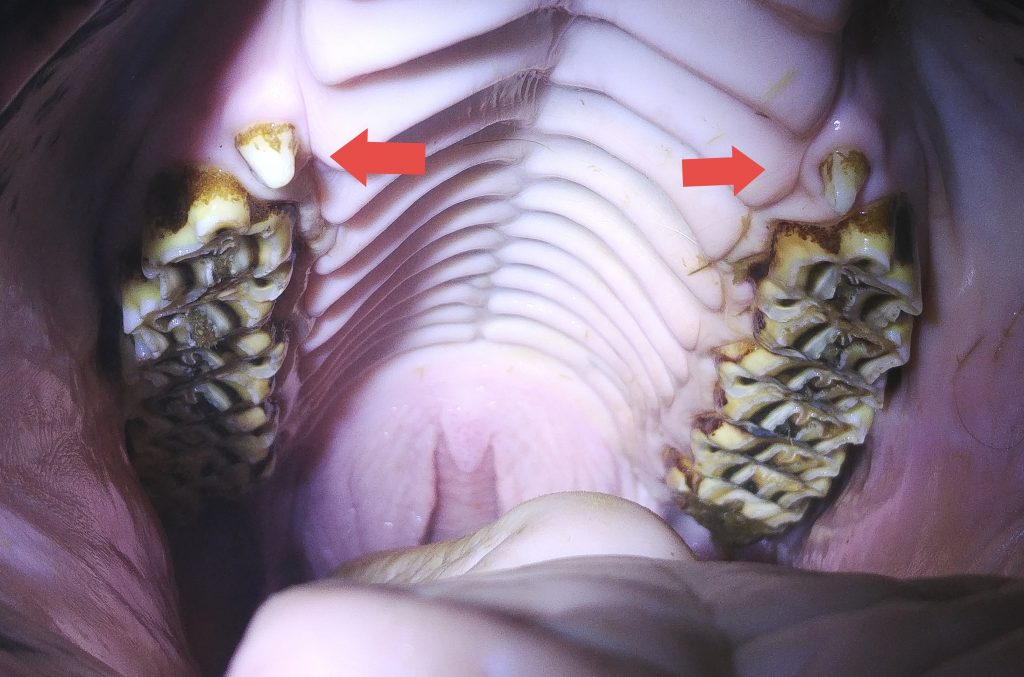Wolf Tooth Extractions
Wolf teeth are small teeth that sit immediately in front of the first upper cheek teeth and occasionally in front of the lower cheek teeth. They usually erupt at about 6-18 months of age, however not all horses will get wolf teeth.
Wolf teeth can vary greatly in size from only a few millimetres in diameter to having roots up to two centimetres long and they often shed at the same time as the first cheek tooth cap, around two and a half years of age.

If they don’t shed and are large or are positioned as such that they interfere with the bit then they may need to be removed as they can easily cause discomfort to your horse. Some wolf teeth may sit below the gum, they are called ‘blind’ wolf teeth and can be extremely painful.
The decision to remove wolf teeth will depend on many factors such as size, position and reaction to pressure over the wolf teeth. It will also depend on the age of the horse and the behaviour of that animal when worked.
To remove wolf teeth in a pain-free manner, local anaesthetic is used (wolf teeth have roots and are still very painful to remove even if they’re small!) and the procedure is relatively straight forward. It is essential that the whole tooth including the root is removed and that minimal gum trauma is caused. The gum will heal very quickly, usually within a week.
Should I have my horse’s wolf teeth removed?
OK to leave wolf teeth if:
- Horse or pony will never be bitted
- Older horse (with wolf teeth) who is working and performing well
Consider removing wolf teeth if:
- Large wolf teeth present in a young animal before backing
- If there is any doubt as to the horse’s comfort when bitted / ridden
Wolf teeth should be removed if:
- Blind wolf teeth
- Wolf teeth in lower jaw
- Wolf teeth are mobile/wobbly
Before any tooth extractions are carried out it is strongly advised that your horse is up to date with tetanus vaccinations.
